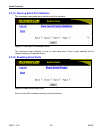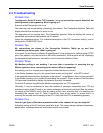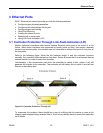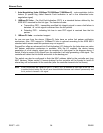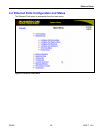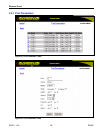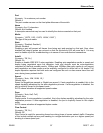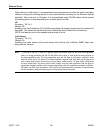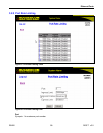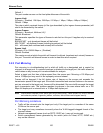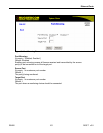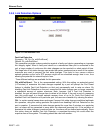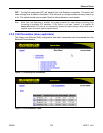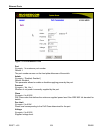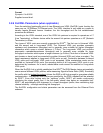
Ethernet Ports
ROS™ v3.5 98 RS400
When the port is half-duplex it is accomplished using 'backpressure' where the switch simulates
collisions causing the sending device to retry transmissions according to the Ethernet backoff
algorithm. When the port is full-duplex it is accomplished using PAUSE frames which causes
the sending device to stop transmitting for a certain period of time.
LFI
Synopsis: { Off, On }
Default: Off
Enabling Link-Fault-Indication (LFI) inhibits transmitting link integrity signal when the receive link
has failed. This allows the device at far end to detect link failure under all circumstances.
NOTE: this feature must not be enabled at both ends of a link.
Link Alarms
Synopsis: { Off, On }
Default: On
Disabling link state alarms will prevent alarms and LinkUp and LinkDown SNMP traps from
being sent for that port.
Note If one end of the link is fixed to a specific speed and duplex type and the peer auto-negotiates,
there is a strong possibility that the link will either fail to raise, or raise with the wrong settings on
the auto-negotiating side. The auto-negotiating peer will fall back to half-duplex operation, even
when the fixed side is full duplex. Full duplex operation requires that both ends are configured as
such or else severe frame loss will occur during heavy network traffic. At lower traffic volumes the
link may display few if any errors As the traffic volume rises the fixed negotiation side will begin to
experience dropped packets while the auto-negotiating side will experience excessive collisions.
Ultimately, as traffic load approaches 100% the link will become entirely unusable. These problems
can be avoided by always configuring ports to the appropriate fixed values.



